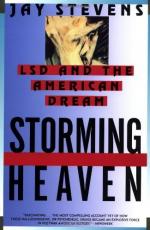|
This section contains 319 words (approx. 2 pages at 300 words per page) |

|

In the 1960s, LSD and related hallucinogens captured the attention of college professors in psychology, religion, and other disciplines because of the drugs' potential to "expand" the mind, thereby helping to improve mental health, encourage empathy, change unhealthy behavior patterns (such as criminal behavior), improve outlook, and produce profoundly religious or spiritual experiences. Many artists, particularly musicians, also used LSD to stimulate the creative process. LSD was central to the hippie movement of the 1960s that focused on peace, love, and individual freedom.
Spearheading the research into LSD as a consciousness-expanding drug was Timothy Leary, Ph.D., a psychologist at Harvard University. With his partner, Richard Alpert Ph.D, Leary led studies at Harvard from 1960 to 1963 on the effects of taking LSD and similar drugs. Their research took them to local prisons, where the pair attempted to use hallucinogens to change criminal...
|
This section contains 319 words (approx. 2 pages at 300 words per page) |

|



